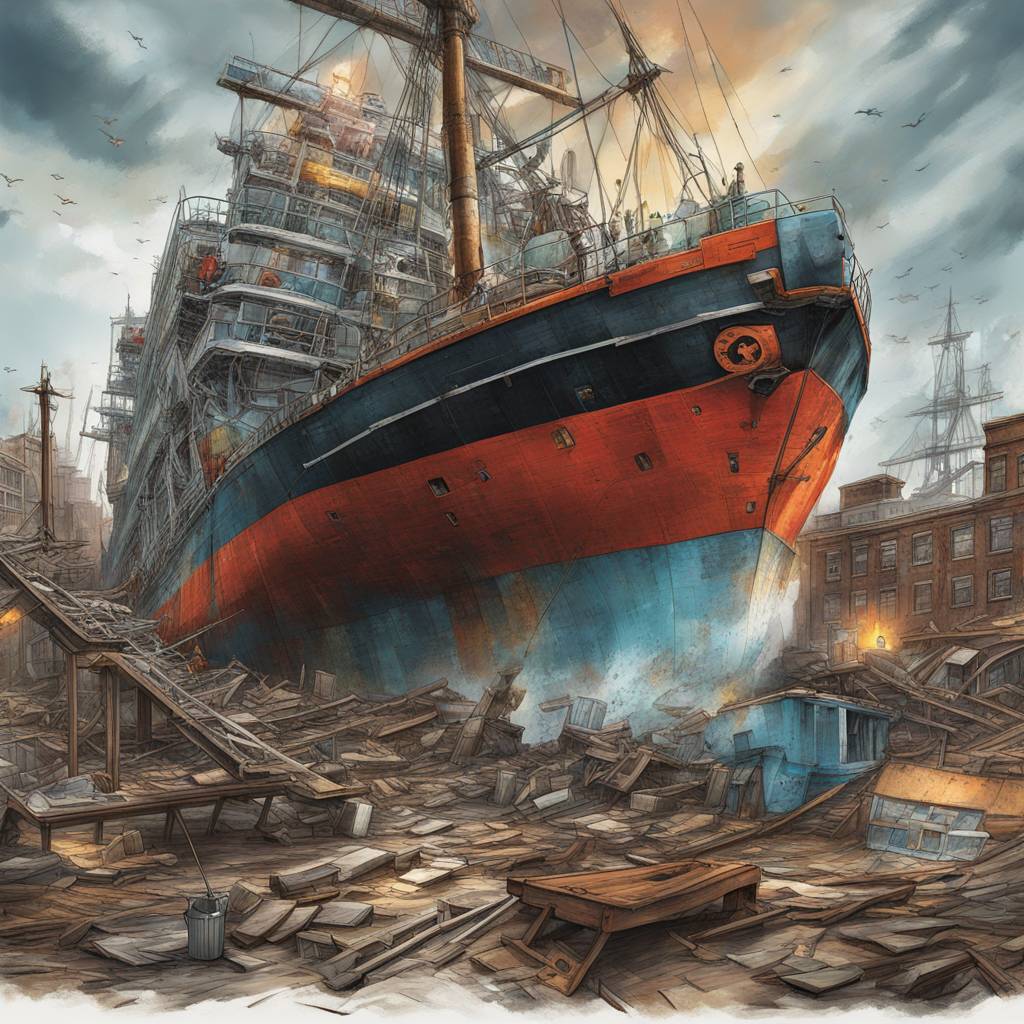Just minutes before the cargo ship Dali collided with Baltimore’s Francis Scott Key Bridge, the vessel experienced a catastrophic failure of its most crucial operating systems. The ship’s alarms went off, the lights went out, the engine stopped, and the rudder froze, leaving the ship adrift and ultimately causing a collision that killed six people. Engineers and shipping experts around the world are waiting for answers as to what caused this failure, as large commercial vessels operate with automation, computerized monitoring, and backup systems designed to prevent such calamities.
Investigators are considering various factors that may have contributed to the failure, such as faulty maintenance, electrical faults, contaminated fuel, human error, equipment glitches, or fires on board. The implications of the investigation’s findings will affect not only international shipping but also who is liable for the estimated $2 billion in damages. The owner of the Dali, Grace Ocean Private, is cooperating with federal and state agencies in the investigation, but may face significant claims depending on the outcome.
A detailed examination of potential factors must include essential elements in modern cargo vessel operation, such as fuel that powers the ship’s massive engine and generators, providing electricity for propulsion, steering, and other systems. Recent incidents of contaminated fuel leading to power loss in vessels emphasize the role of fuel quality in ship operations. The sudden loss of the ship’s generators has prompted experts to consider fuel problems or electrical chain reactions as potential causes of the failure.
Investigations are underway into the quality and integrity of the fuel on board the Dali, as well as the ship’s filtration systems and fuel delivery mechanisms. However, the possibility of other factors causing the blackout, such as computer failures or faulty valves, cannot be ruled out. The delay in activating the emergency backup generator and the subsequent issues with the lights suggest a potential problem with the backup system, which is crucial for steering the vessel.
The Coast Guard conducted an inspection of the Dali in September but found no deficiencies. While ships have become more modernized with computer monitoring systems to detect and respond to issues automatically, these systems can also introduce new failure modes. Shutdowns triggered by automated systems in response to overloads or errors can potentially cause additional problems, leading to catastrophic failure in some cases.
The investigation into the Dali’s collision and blackout is ongoing, with experts considering a range of factors that may have contributed to the disaster. Potential causes such as fuel contamination, electrical chain reactions, computer failures, or faulty maintenance are being examined to determine the root cause of the failure. The findings of the investigation will have implications for international shipping practices and potentially affect liability for damages resulting from the collision.








